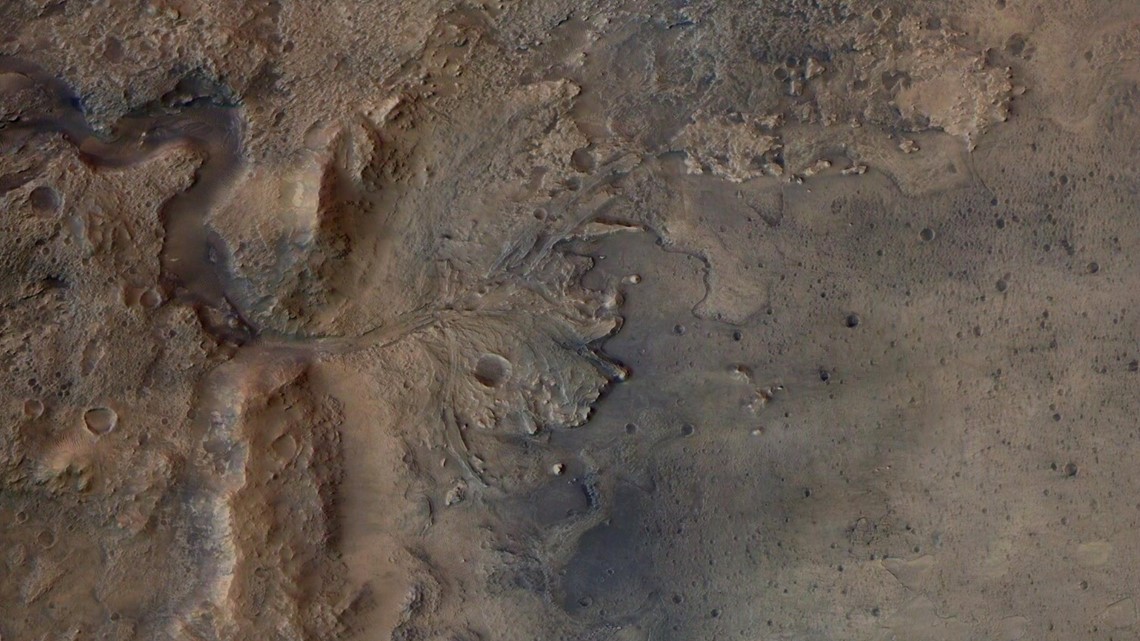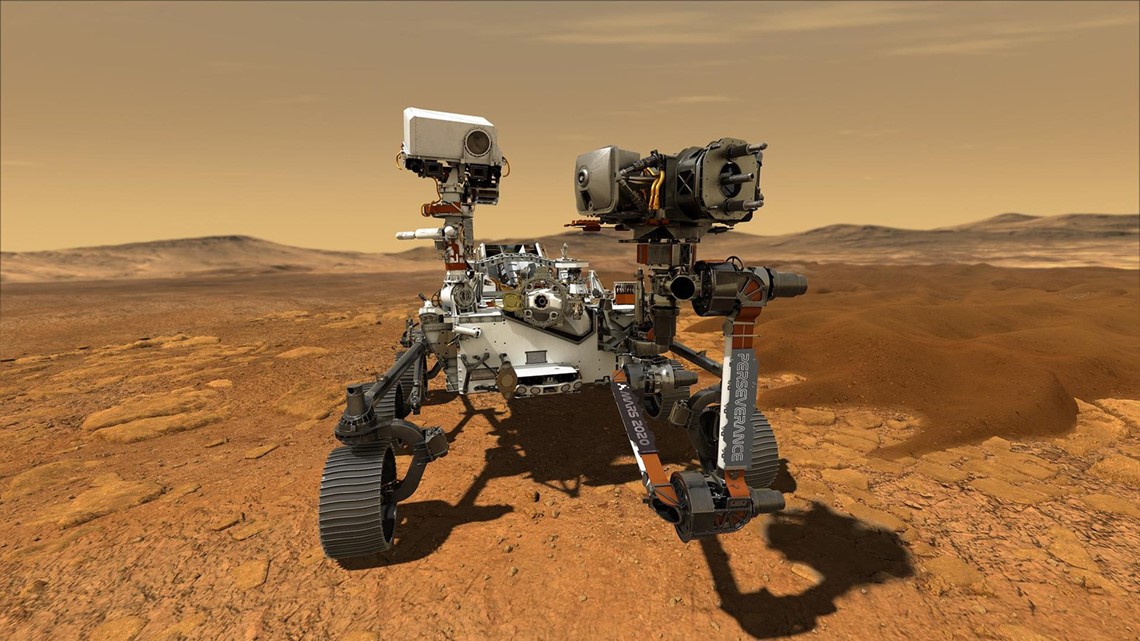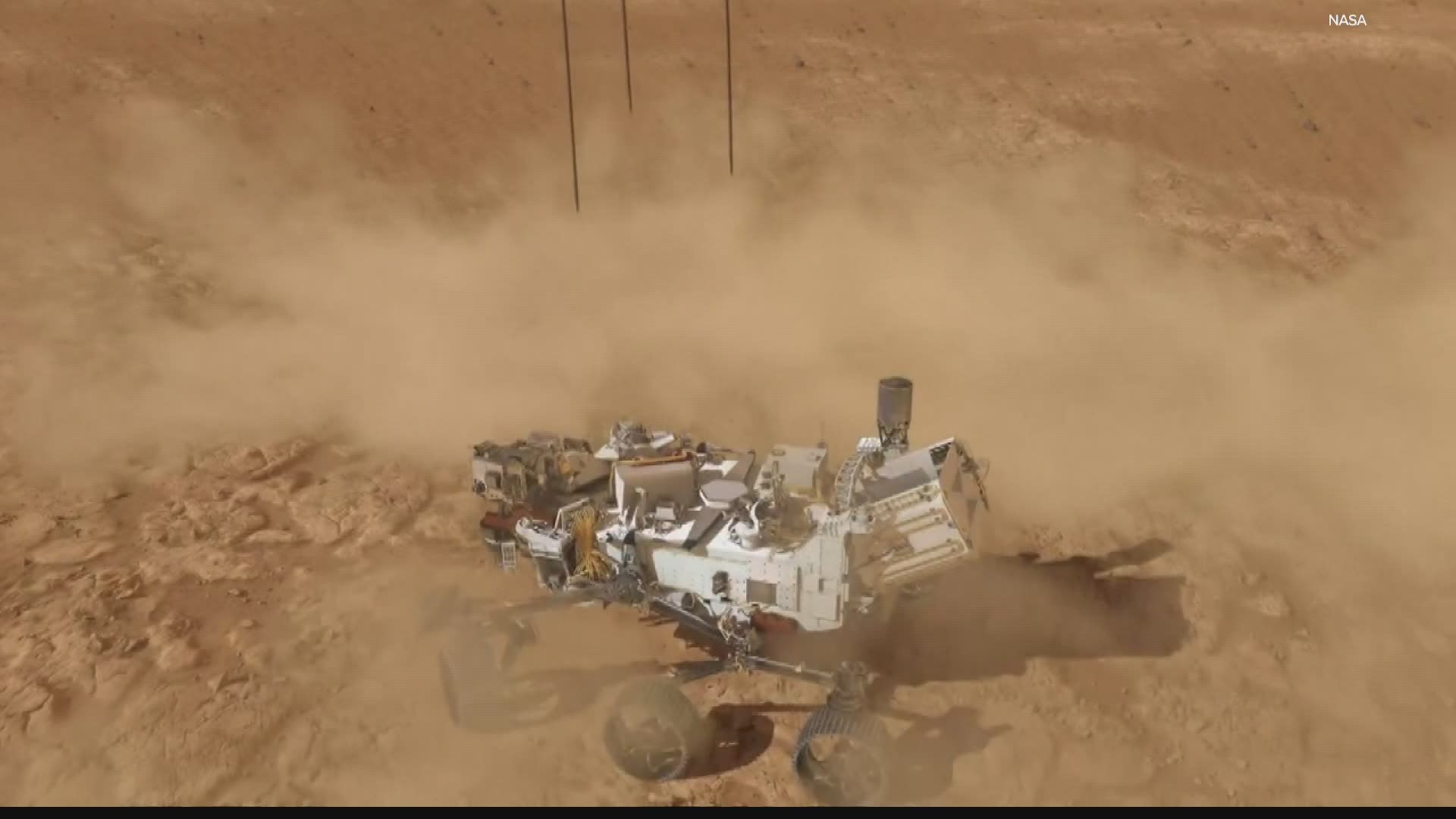WEST LAFAYETTE, Ind. — Last summer, a rocket launched from earth on July 30 headed for Mars. More than 200 days and 300 million miles later, the cargo nears the red planet. The NASA Perseverance rover will take a seven-minute wild ride through Mars' atmosphere before touchdown just before 4 p.m. Thursday.
"We're all really excited,” said Briony Horgan, Purdue professor of planetary science. “We're trying not be nervous."
Horgan, a planetary geologist, is part of the science team that helped pick the landing spot, Jezero Crater, the mouth of an ancient river on Mars.
"If you had to go to one place on earth to try to understand the entire history of the geology and life all over earth, where would you go?” Horgan asked. “It's really tough. So, we had that same kind of decision-making process for Mars."


The primary mission is looking for past signs of life.
"When we look for life on Mars, we're looking for signs of ancient microbes, which is really tough because they're very small,” Horgan said. “So, our rover is very advanced. But because of that, one of the big parts of this mission is collecting samples of rocks that might contain signs of ancient life and bringing them back to Earth."
The Perseverance rover will collect pencil-sized tubes of surface material to be studied immediately by on board cameras and microscopes, but eventually retrieved by future missions to Mars in the next decade. The rover even has a mini-helicopter that can hover above the surface of Mars.
"The fact that we can land this incredible machine, this rover is a semi-autonomous robot that can collect detailed microscopic analyses of rocks on a planet that's hundreds of millions of miles away and that's just incredible to me,” Horgan said.


The rover will be collecting samples on Mars for about three years.
"So if we find signs of life, that's obviously a huge result telling us that life is common,” Horgan said. “If we don't find signs of life on Mars, that's also a big result. It might tell us that life is actually incredibly special here on Earth."
Perseverance may bring us those answers.
The Perseverance rover is scheduled to land on Mars at 3:55 Thursday afternoon.
You can watch live on the NASA app and several other channels. The signal takes about seven minutes to reach earth and will have video and audio from Mars.
Mars is a busy place. Rockets from China and the United Arab Emirates arrived in the orbit of the red planet just last week.

